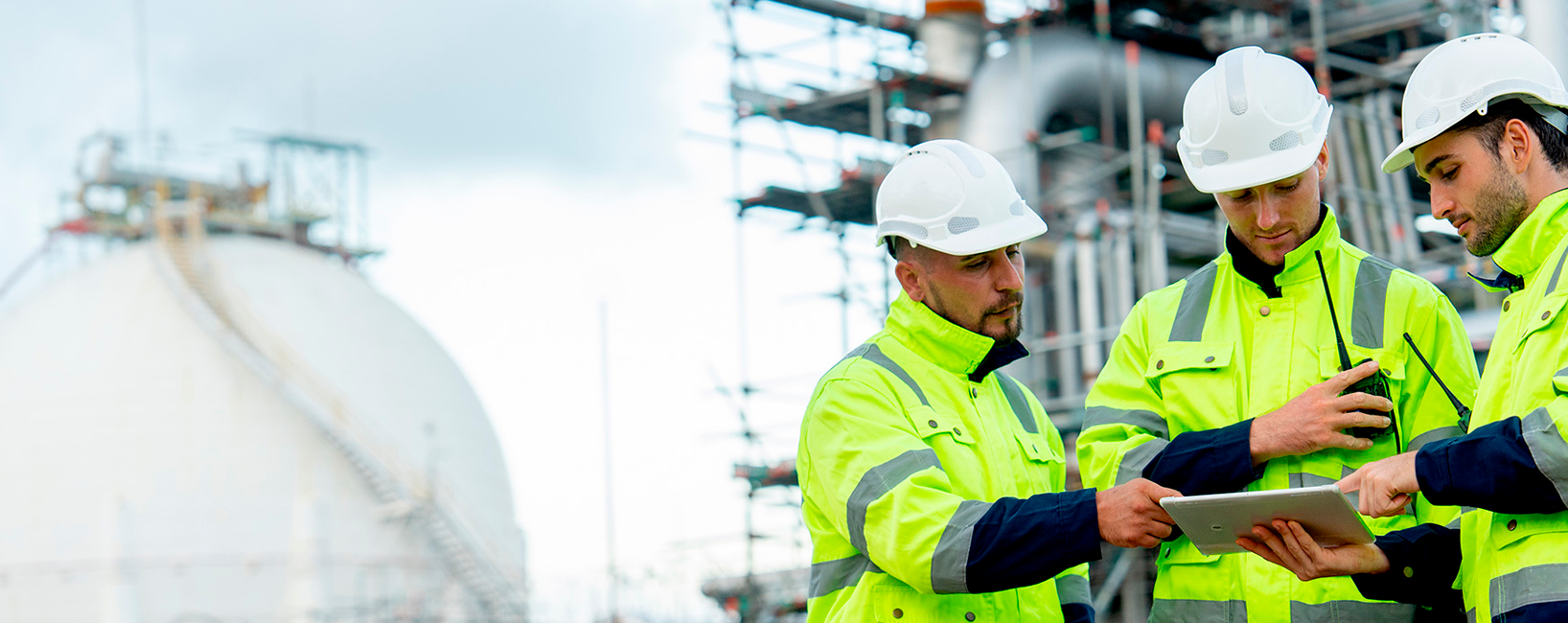The impact of clean technologies, also known as Cleantech, is already a tangible reality — for the first time, wind & solar energy made up 30% of the EU’s electricity generation in the first half of 2024, surpassing fossil fuels. These new key players are significantly reducing our carbon footprint, and transforming businesses, communities, and our lives toward a cleaner future.
Did you know that the world’s largest offshore wind farm, located in the North Sea, generates enough electricity to power over 2 million homes annually? Even more impressive is that it can capture nearly 4 million tons of CO2 each year — equivalent to taking 2.3 million cars off the road.
So, how does Cleantech impact the construction sector? Read on to find out!
Table of contents
What is Cleantech?
Put simply, refers to any technology designed to reduce or optimize environmental impact by minimizing or eliminating pollution, waste, and energy consumption. It has three main goals:
- Reduce the negative impact on the environment and promote sustainability.
- Improve the use of natural & renewable sources.
- Create more efficient products or services.
Fun fact: The origin of this term is traced back to the venture capital (VC) investment community, which began using it in the late 1990s & early 2000s. It was notably popularized by Nick Parker and Keith Raab, who founded the Cleantech Group in 2002, one of the first companies dedicated to identifying innovative companies in the sustainability sector. Today, references to this concept continue to be popular in financial, VC, and business circles.

What is the difference between Cleantech, Greentech & Climate tech?
Let’s set the record straight — these 3 terms are often used interchangeably, but each one has its unique focus within sustainability:
- Greentech or green technology, is the broadest term of all. Without a clear set of definitions, it refers to technology designed to enhance the environment by reducing the adverse impacts of human activity or even reversing those effects.
- Cleantech primarily targets technologies that reduce pollution and emissions associated with traditional industrial processes and energy production. These solutions often aim to “clean up” existing systems and make them more sustainable.
- Climate tech — short for climate technology — specifically refers to technologies specifically designed to reduce greenhouse gas emissions or mitigate the effects of global warming. Unlike Greentech and Cleantech, which focus more broadly on environmental sustainability, Climate tech encompasses products and services that directly impact greenhouse gas emissions.
For instance, while wastewater treatment systems are considered Cleantech due to their environmental benefits, but since they do not directly address CO2 emissions they are not classified as Climate tech. Roughly speaking, Cleantech and Climate tech can fall under the category of Greentech, but not all Greentech can be classified as Cleantech or Climate tech.
Though these 3 emergent approaches have different definitions, they often overlap because these technologies sometimes fall into multiple categories. For example, renewable energy like wind power can be classified as Green, Clean, and Climate tech since it reduces the adverse effects of human activity on the environment, offers a cleaner alternative to fossil fuels, and helps mitigate climate change by reducing CO2 emissions.
Overcoming challenges in the industry
So why aren’t more Cleantech companies scaling up to become global category leaders in the net-zero economy? Below are 3 of their biggest challenges:
- Capital challenges: Developing Cleantech solutions require significant time, money, and technical expertise, often leading to significantly higher costs than traditional technologies. These high capital costs, combined with the need for substantial initial investments, make it challenging for Cleantech companies to scale, especially in markets with insufficient government incentives. To overcome these obstacles, companies should explore alternative funding sources, such as private equity financing and public sector funding opportunities. It is crucial for these companies to tap into all available resources to secure the necessary support.
- Technology maturity: Many clean technologies are not yet market-ready to replace current industrial processes that heavily rely on fossil fuels. A significant number of these technologies are still in the early stages of development and may not be fully mature for large-scale deployment due to issues such as efficiency & reliability.
- Fragmented markets: These startups have a big scaling challenge because the market they sell into is very fragmented. Unlike software companies, which can find lots of potential buyers in major cities like San Francisco or New York, Cleantech startups operate in a market that is spread out and varied. For example, they must navigate different sectors, such as energy, agriculture, and construction. Each sector is divided into many industries and regions, each with different necessities, making it harder for them to find and reach their customers compared to other types of technology.
- Lack of unified energy standards: Each state, region, and country has specific regulations regarding renewable energy. These differences, such as varying emissions limits and technical requirements, create challenges for the widespread implementation of clean technologies across different locations.

Popular Cleantech trends
If you want to know which Cleantech trends will impact your business going forward, here are 2 of the hottest ones:
Hydrogen
Hydrogen is the most abundant chemical element in nature. Hydrogen energy offers an alternative to fossil fuels and could provide a cleaner way to power our world.
Unlike methane, hydrogen does not produce CO2 emissions when used in fuel cells to generate electricity or combusted to produce heat and power.
Its 3 key advantages over other energy sources are:
- Renewable energy: Hydrogen energy can be considered renewable when made via electrolysis, which splits water into hydrogen and oxygen. If powered by renewable energy, this process has a near-zero carbon footprint. However, there are other methods of producing renewable hydrogen, including thermochemical processes and biological methods, such as biomass gasification.
- Storable: This allows it to be stored for future use and deployed during periods of high demand.
- Versatile: It can be converted into electricity or synthetic gas, making it ideal for commercial, industrial, or mobility applications.
The versatility of hydrogen technologies extends to the construction industry, where using it as a fuel source in the kiln can potentially reduce both energy consumption and greenhouse gas emissions related to the cement production process.
Carbon Capture, Utilization & Storage (CCUS)
CCUS means: Carbon Capture, Utilization, and Storage and it is the process of capturing carbon emissions for storage or upcycling the captured carbon, thereby reversing its negative impacts once emitted into the atmosphere.
CCUS technology is promising clean technology, especially in hard-to-abate industrial sectors such as cement, steel, and chemical production, which rely on processes that release a large amount of CO2 emissions. CCUS has proven capable of reducing carbon emissions from gas and coal power plants, cement production, and other large emitters by up to 90%.
The Middle East has become a key player in this field, with CCUS technology growing as a robust and innovative tool to reduce carbon emissions and achieve net-zero goals. In 2023, initiatives in Saudi Arabia, Qatar, and the UAE contributed approximately 10% of global carbon dioxide capture, totaling an impressive 40 million tonnes.

Cemex Ventures backs Cleantech startups
According to S&P Global Commodity Insights, investment in Cleantech is projected to grow from US$800 billion in 2024 to US$1 trillion by 2030. This staggering figure highlights the crucial role that funding for these technologies plays in facilitating the energy transition & achieving the decarbonization goals set for 2050.
At Cemex Ventures, we’re committed to leading the construction industry’s shift toward greener and cleaner practices. Here are some Cleantech companies from our investment portfolio:
HiiROC
These hydrogen tech leaders have developed a novel process for low-cost, zero CO2 emission hydrogen production called Thermal Plasma Electrolysis (TPE). Thanks to this clean technology, sectors like cement can reduce their reliance on fossil fuels and lower harmful emissions.
In 2023, Cemex significantly increased its investment in a UK-based startup to boost hydrogen injection capacity across its cement operations and reduce reliance on fossil fuels. The primary focus will be Cemex’s key cement plant in Rugby, UK, with plans to eventually extend HiiROC’s innovative technology to its EMEA operations, further deepening its partnership with the startup.
KC8 Capture Technologies
Our latest investment was in KC8, the Australian startup previously named a Top 50 Contech Startup for 2024 and featured in our Cleantech Construction Map 2023 under the CCUS vertical.
KC8 has developed an affordable carbon capture solution to reduce greenhouse gas emissions from fossil fuel use in heavy industries. Their innovative technology captures up to 95% of CO2, improves energy efficiency by 15%, and cuts operating costs by 50% compared to current amine solvents. Cemex is partnering with KC8 to cost-effectively cut CO2 emissions from its production processes. This partnership aims to elevate KC8’s technology through its largest project yet, supporting the startup’s goal of becoming a global leader in CO2 capture techniques.
If you want to learn more about this topic, check out this video series, in which our Investment & Open Innovation Expert, Ibon Iribar, delves into the role of Cleantech in the construction industry on the Soil Link podcast.
If your startup has a clean technology that can revolutionize the construction industry, get in touch with us! We would love to hear more about your solution and feature your startup in our Cleantech Construction Map 2025!

